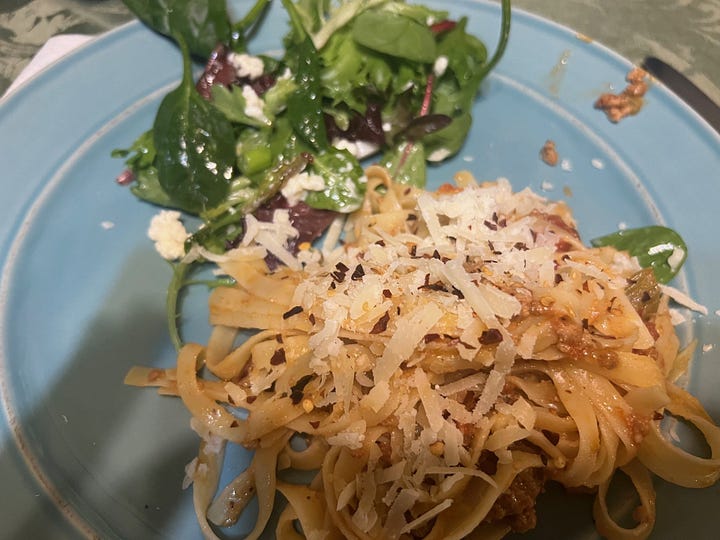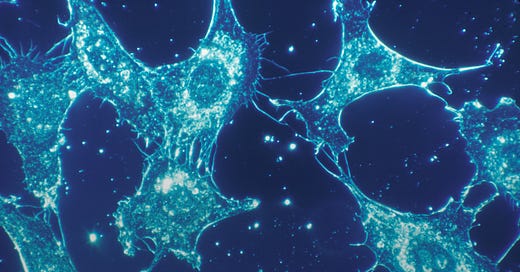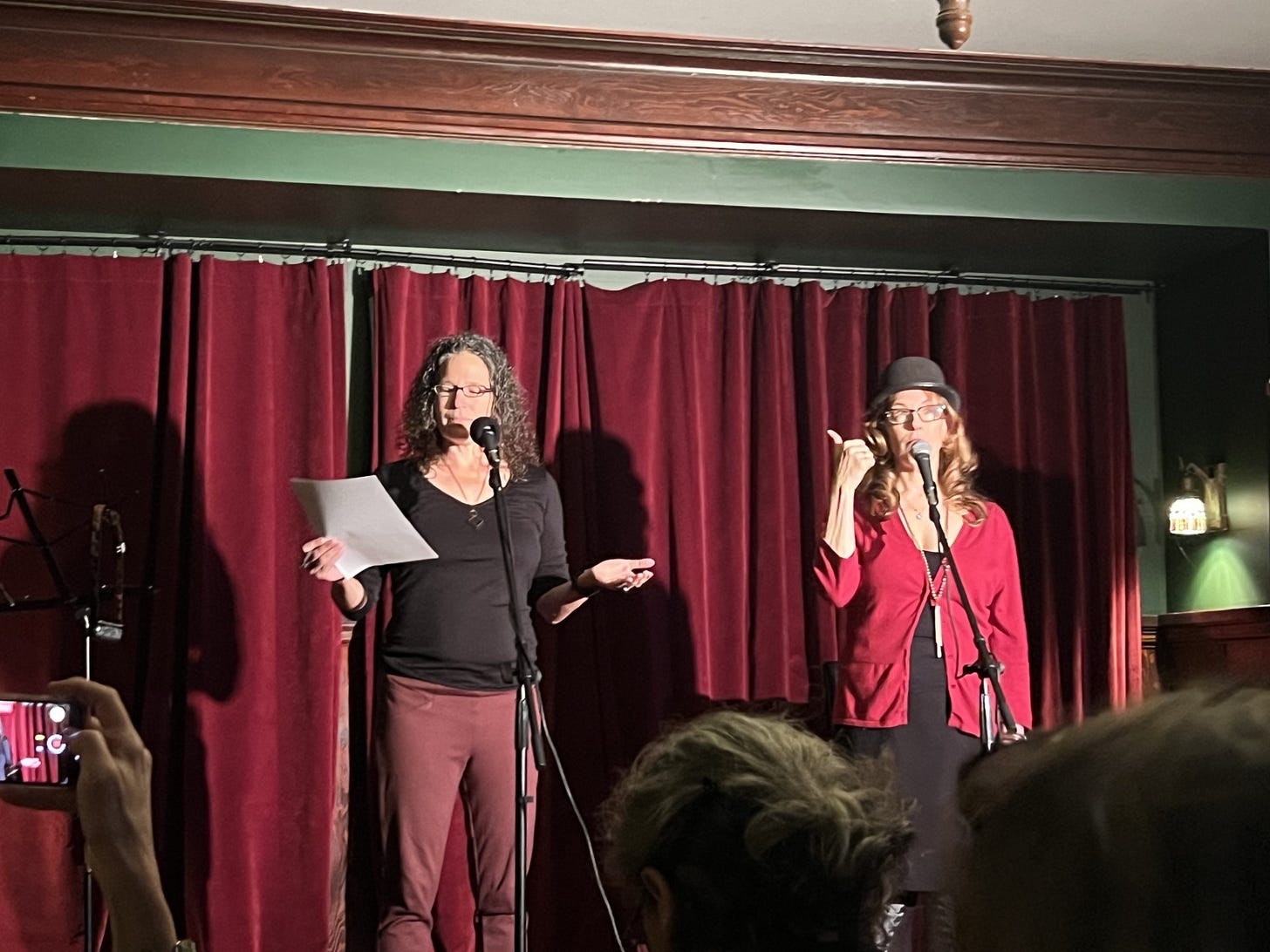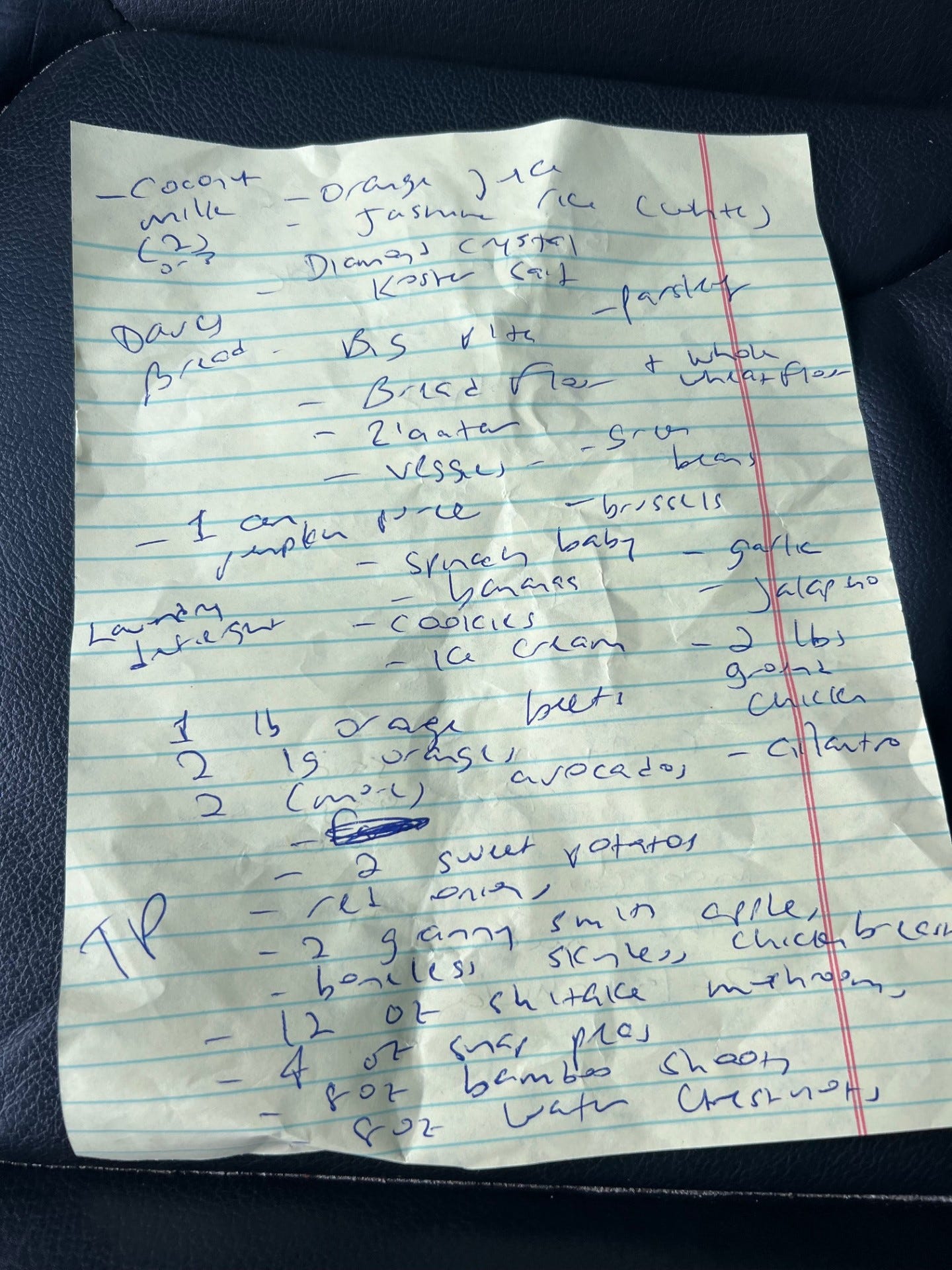
What do a box breathing anesthesiologist; a naked pharmacist who performs CPR on a woman having a seizure at a Korean spa; a woman with a liver like a rock star, despite not drinking; and an emergency room doctor responsible for critically ill patients on an Antarctic cruise have in common?
Last Sunday, I had the honor of sharing a stage with these people and more, as part of The Interstitium, Stories of Health, Illness, Wellness and Beyond, an annual event put on by the Northwest Narrative Medicine Collaborative (NWNM).
If you’ve never heard of the word Interstitium, check out this RadioLab podcast.
Did you know that in addition to taking classes on anatomy, biology, and pathology, in medical school, your doctor may have spent time doing a close text examination of an Alison Bechtel graphic novel or following a prompt to write about a time when they felt ashamed?
Courses in narrative medicine are part of the curriculum at most U.S. medical schools. A few schools like Columbia University also offer narrative medicine certificate programs and Masters programs. NWNM is a nonprofit organization with a unique blend of widely accessible offerings.
Through storytelling and highlighting a range of perspectives — healthcare providers, patients, caregivers, spiritual advisors and more —narrative medicine aims to improve the delivery of healthcare.
Narrative medicine was floating around in my subconscious for a while, though I didn’t know it was a thing until I read about Laurel Braitman, (who I’ve mentioned before), and then started seeing references to it all over the place. That’s the Baader-Meinhof phenomenon, also known as frequency illusion, in action.

When I was diagnosed with breast cancer and staring down a year of treatment, I was eager to find a volunteer opportunity so that I could have a sense of purpose beyond my role as a patient.
In a fortuitous stroke of timing, my friend Peggy, who facilitates lots of different writing forums, including our local writers’ collective, which I’ve been a member of for over 20 years, put on an event featuring the Northwest Narrative Medicine Collaborative. I checked them out and reached out to ask if I could volunteer. In response, I received the nicest email I’ve ever gotten from an organization, grateful that I wanted to help.
In December, I participated in one of NWNM’s monthly Community of Practice writing workshops — "Changed Knowledge:" A Workshop on Changing Diagnoses, Changing Identities, and Metagnosis. Danielle Spencer, founder of the Metagnosis Project, and Academic Director of the Columbia University Master of Science in Narrative Medicine Program, and Allison Coffelt, who teaches in that program, were the facilitators. We did a close read of Kafka’s Metamorphosis and a writing prompt (What happened to me?) that yielded some amazing stories. A few days later, I participated in Peggy’s event with NWNM and I was equally blown away.
I had surgery the day I was supposed to tell a story at our annual writer’s collective event, and maybe that pent up energy is what led me to volunteer to read at The Interstitium.
The theme was “What Were They Thinking?” I wish the entire event had been recorded because the stories are worth listening to again and again to fully appreciate all they contained in response to that question.
Here’s an excerpt from my story, which begins in the Yucatan, includes an opportunistic Marco Rubio Tweet, and cycles in and out of hospitals during COVID.
A hospital is a remarkable ecosystem of humanity — and of hidden thoughts and emotions. In this realm, words matter. Body language and facial expressions are deliberately masked so that we patients can have unwavering faith in these words.
I’ve embedded the live recording of my story here, in case you are interested in hearing it. The audience was engaged and appreciative, not just to my story, but to all the remarkable stories. The evening brought home the nurturing power of storytelling in medicine. It truly reflects our shared humanity.
Do you have a story to tell? If so, tell me about it in the comments.
If you are interested in learning more about narrative medicine, I encourage you to check out the workshops and trainings offered by the Northwest Narrative Medicine Collaborative. The Metagnosis Project is also seeking storytellers.
This month, my work with NWNM is gearing up. I’ll keep you posted on what I learn.
The Best-Timed Thing I Cooked This Week




I’ll tell you what - going through chemo is an exercise in timing - staying ahead of the steroids, capitalizing on energy when I have it (YES, I DID THE POLAR BEAR SWIM!), managing my hair, which has had me looking like Argus Filch, caretaker of Hogwarts - hence the snood and scarf I wore to the reading — and figuring out what I can eat and when.
For an inveterate cook like me, the chemo experience has been hard. Last Friday, the weather was stormy and I thought it would be a great idea to slow cook Marcella Hazen’s Bolognese, which I make with just pork and sometimes also ground turkey, because I am allergic to beef. But Fridays are my worst days and though my head and heart enjoyed the Bolognese and tagliatelle, my digestive tract protested all night long and into the next day.
We ate
‘s Chaat Butter Greens with Eggs as a last good meal before chemo. Though I was exhausted on Saturday, I made her focaccia to go with split pea soup. When eating anything else was risky, or in the middle of the night when I needed to soothe myself to sleep, that focaccia saved me. There is one piece left.Despite the fact that I exercise every day and am not consuming any more calories than usual, the steroids and carbs are doing a number on my belly (I’m about at my pregnancy weight). I’ll deal with that when chemo is over.
The meal that was perfectly timed, consumed on a Tuesday night (my best eating night) was Meera Sodha’s take on Saag (Spinach) Paneer from her book, Made in India. I added the traditional cream. We ate it with fresh-made naan, from dough I had made and frozen a month ago. Have I mentioned that I am enjoying carbs?
Fresh from this week’s treatment, I took advantage of my steroid rush, went to the gym, got my hair trimmed so I would look less Filch-like, did some meal planning, went to the store and cooked. There are bland, easy to digest things for the bad days,
‘s shortbread cookies to soothe, and salads on the docket for when I am feeling better. For anyone interested in checking out Emily’s I think I have a few free trials to share. Let me know in the comments if you are interested.







Narrative medicine is the new support group. Brilliant.
Thank you for sharing with this community as well. Anything to help the healing. 🙏
I think this so valuable... Your story is riveting. The "Changed Knowledge:" workshop looks incredible--so exactly what happens.